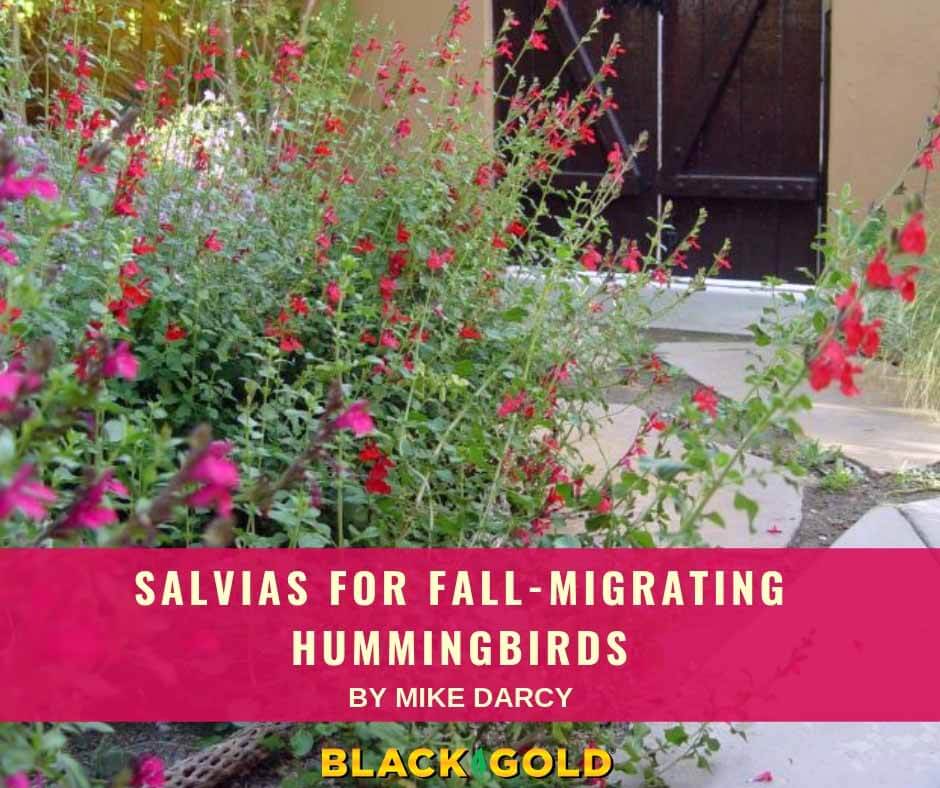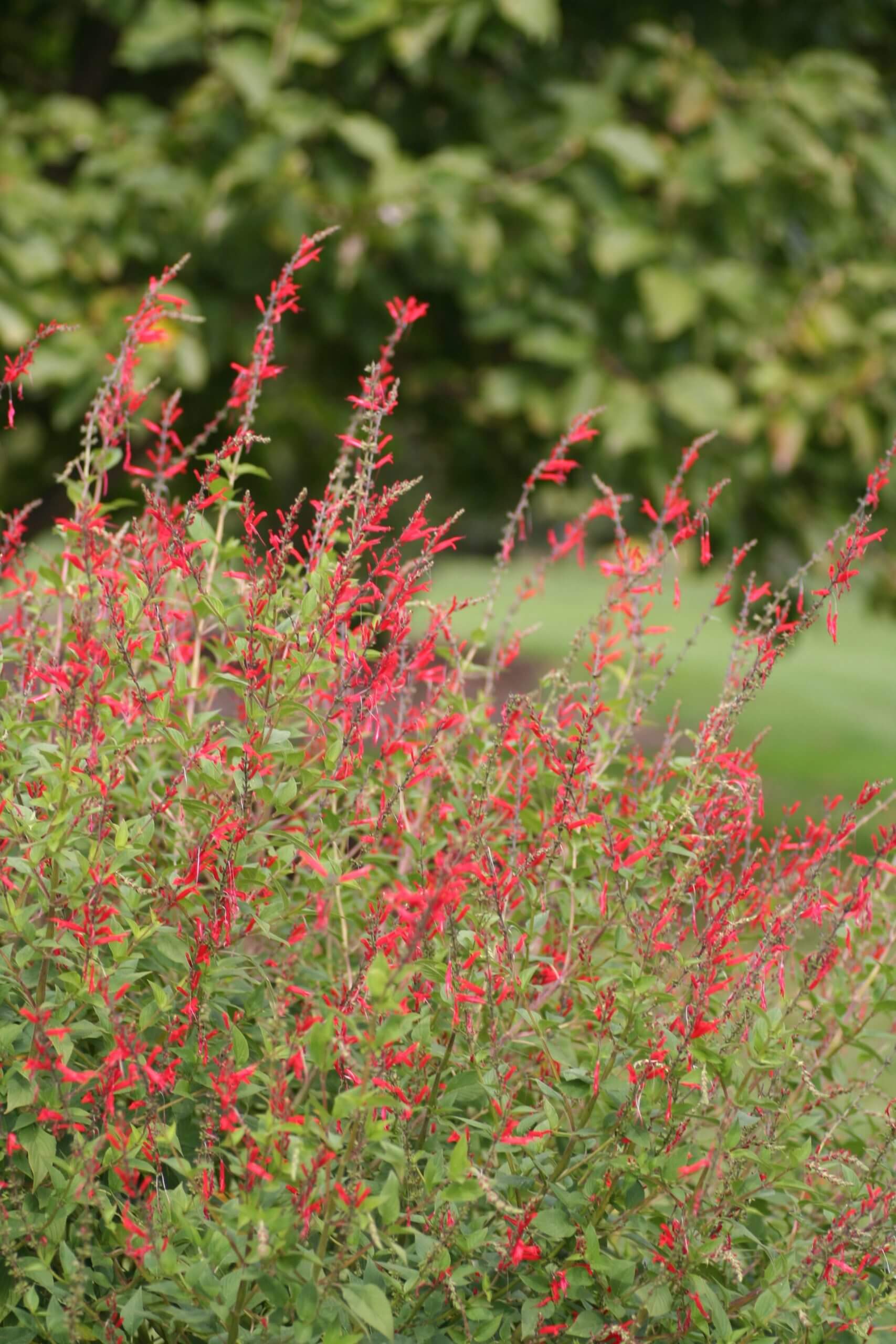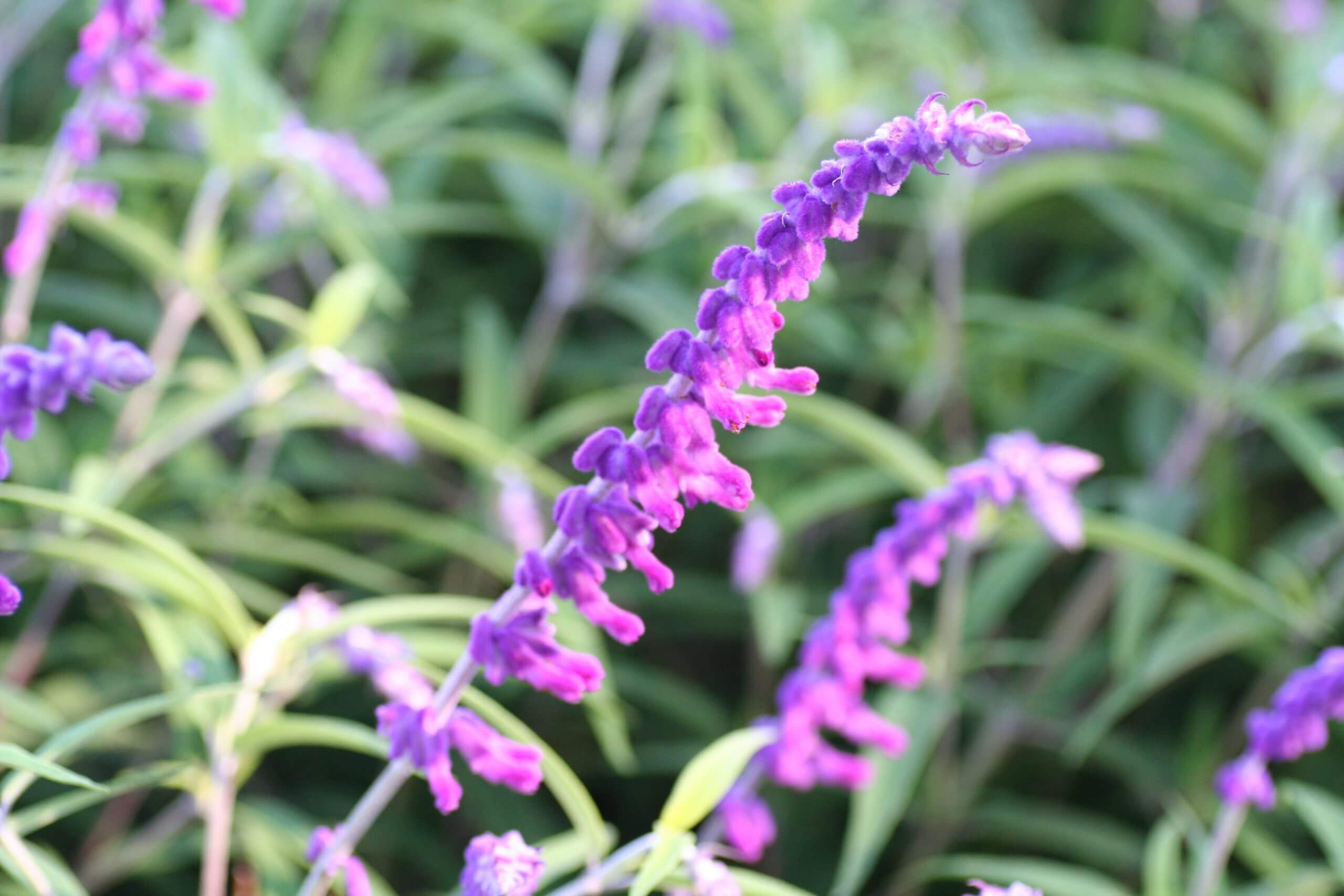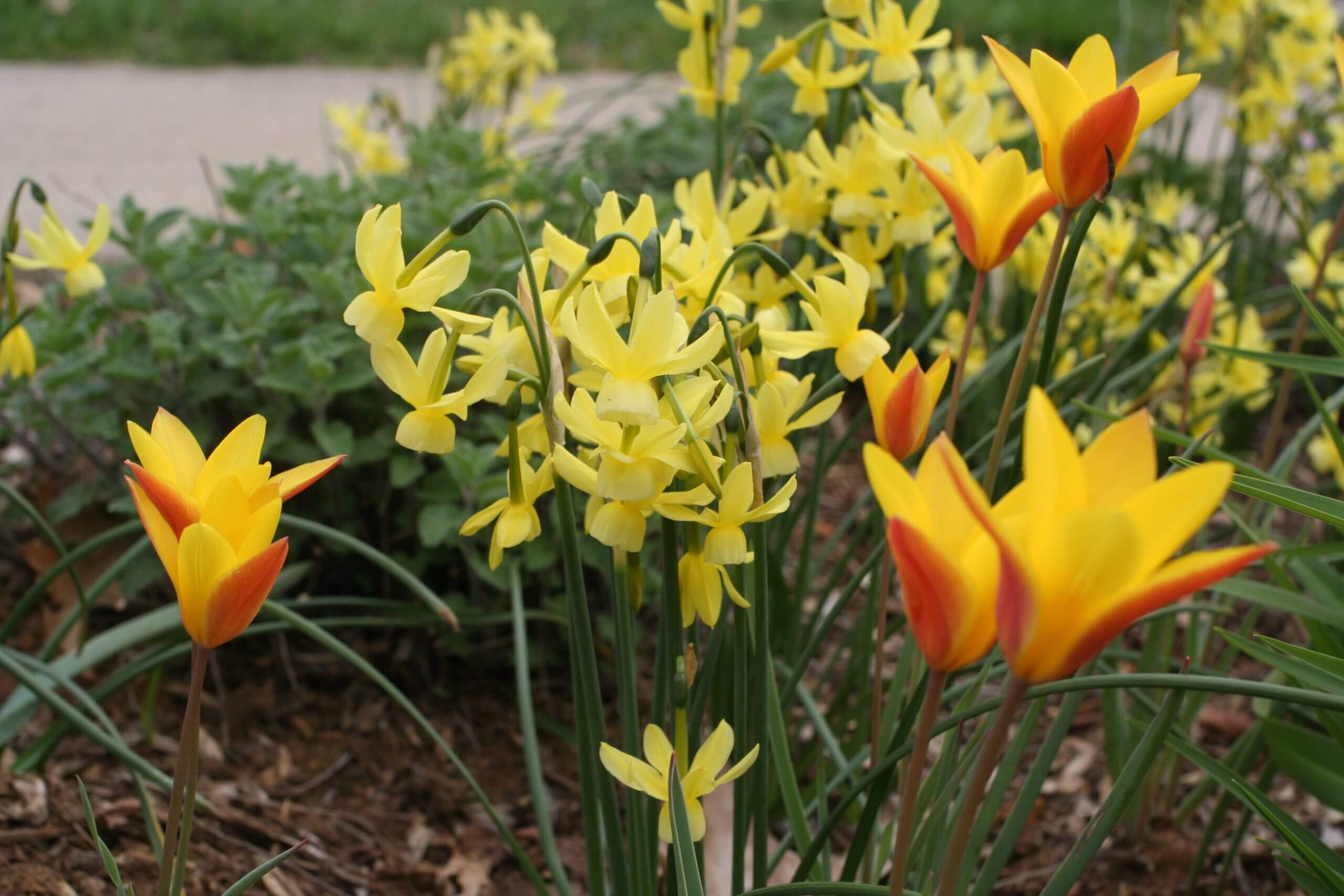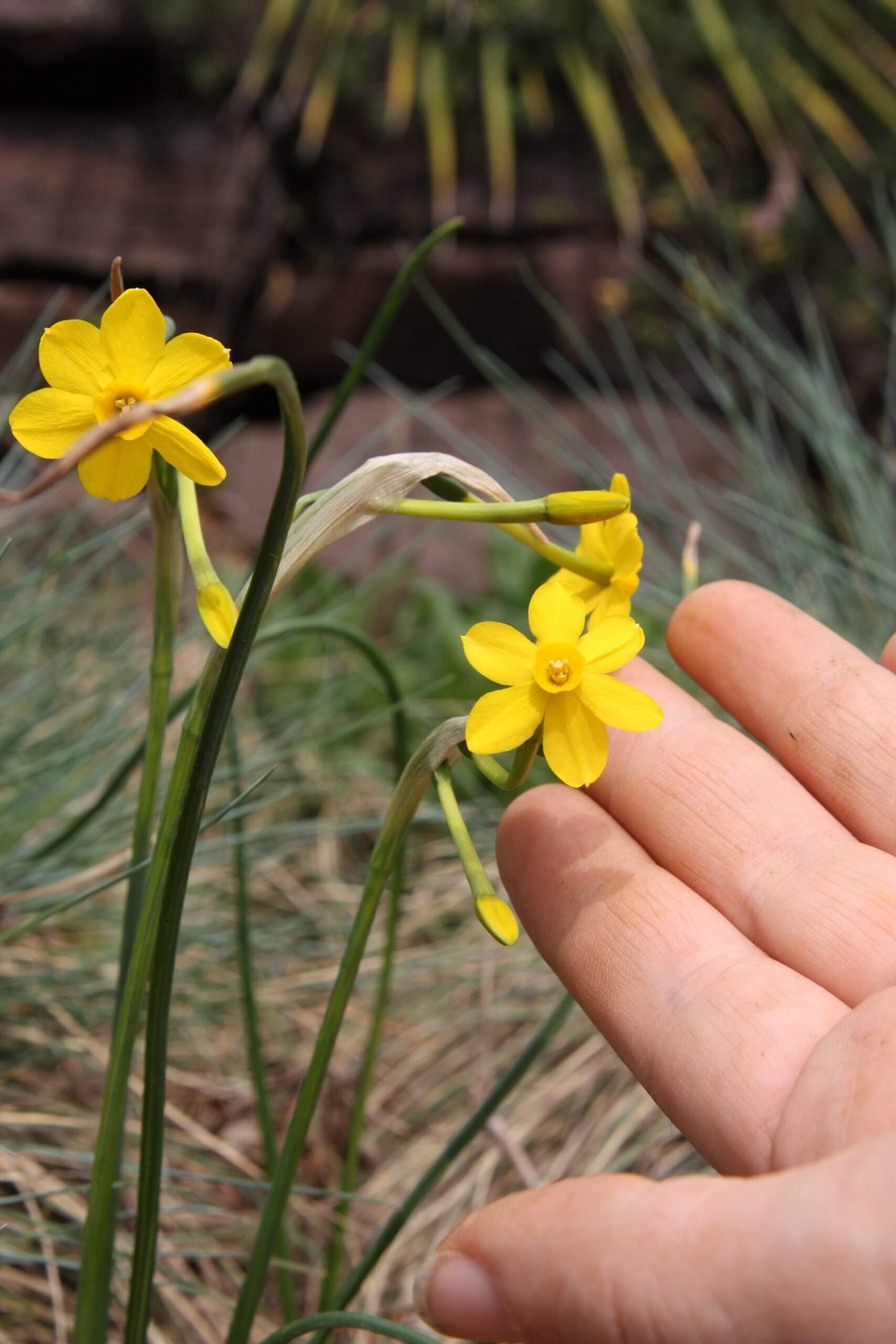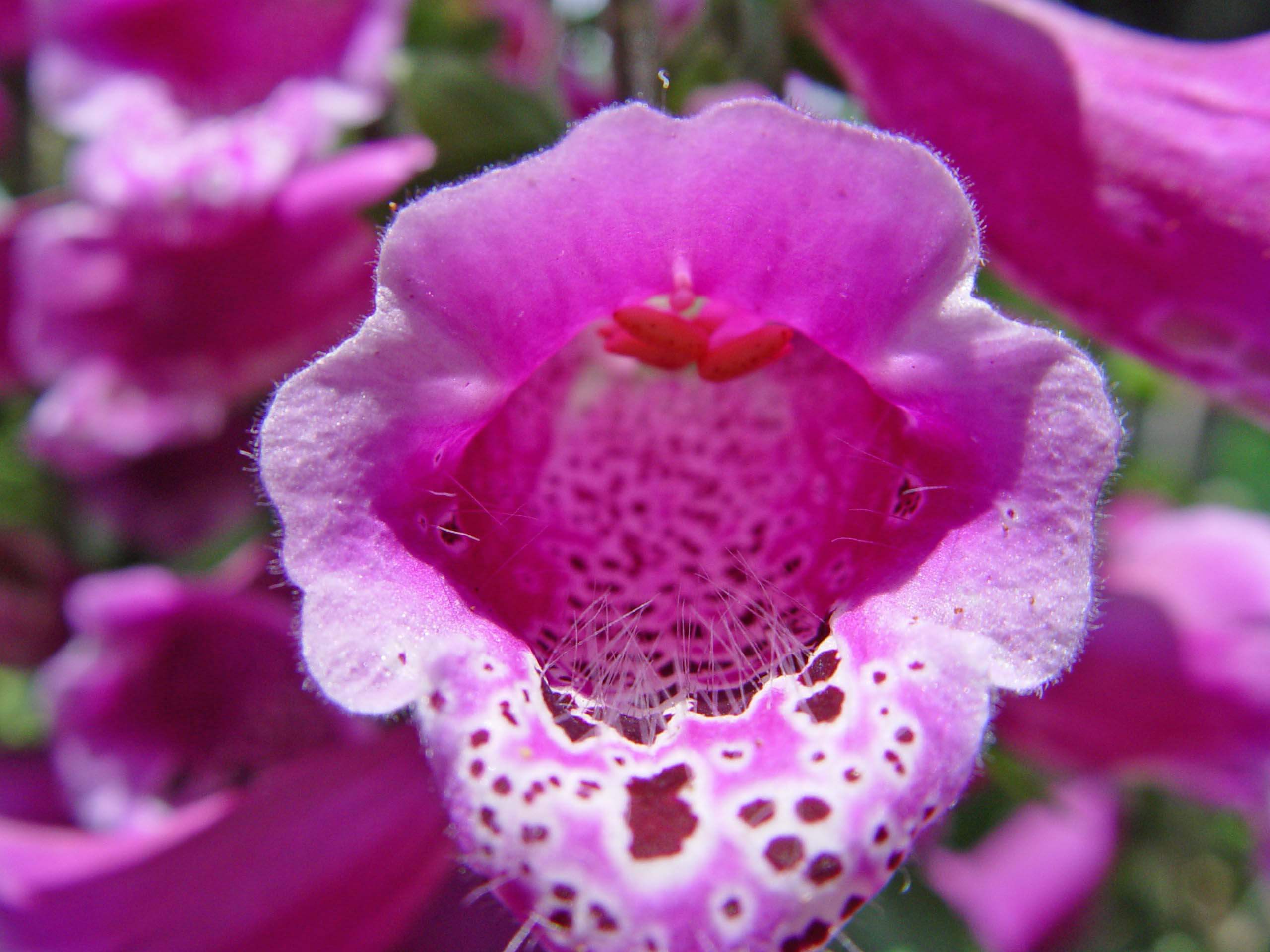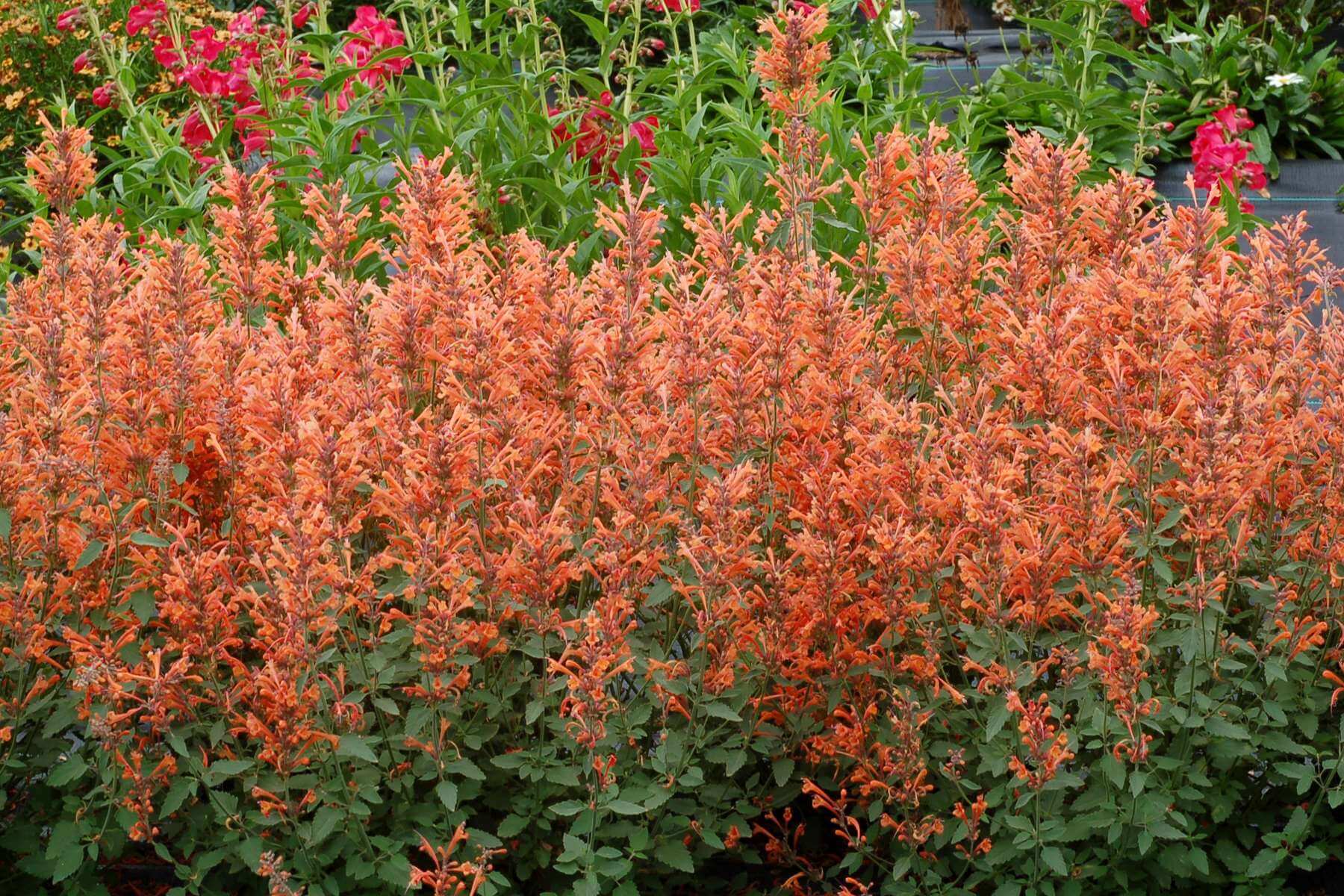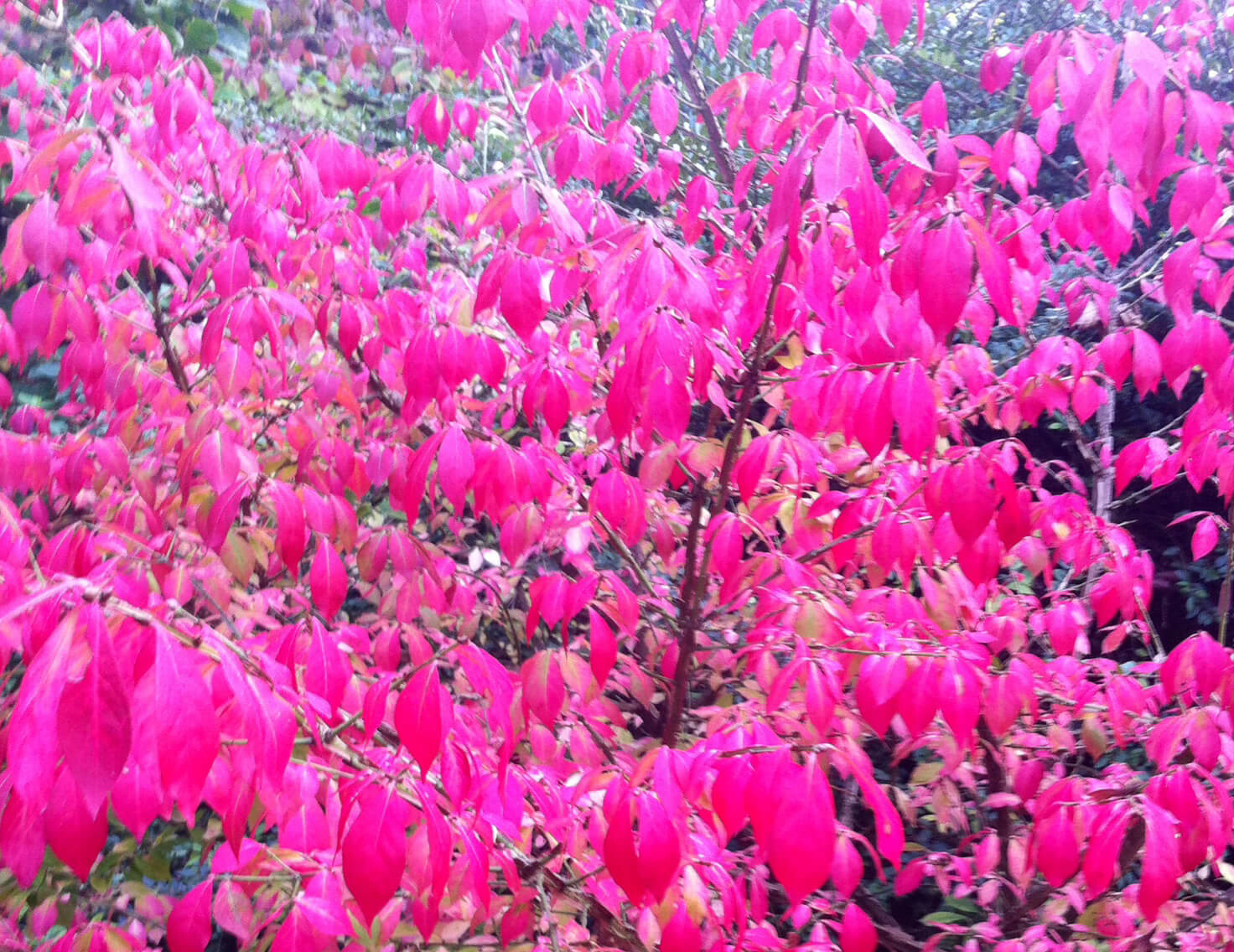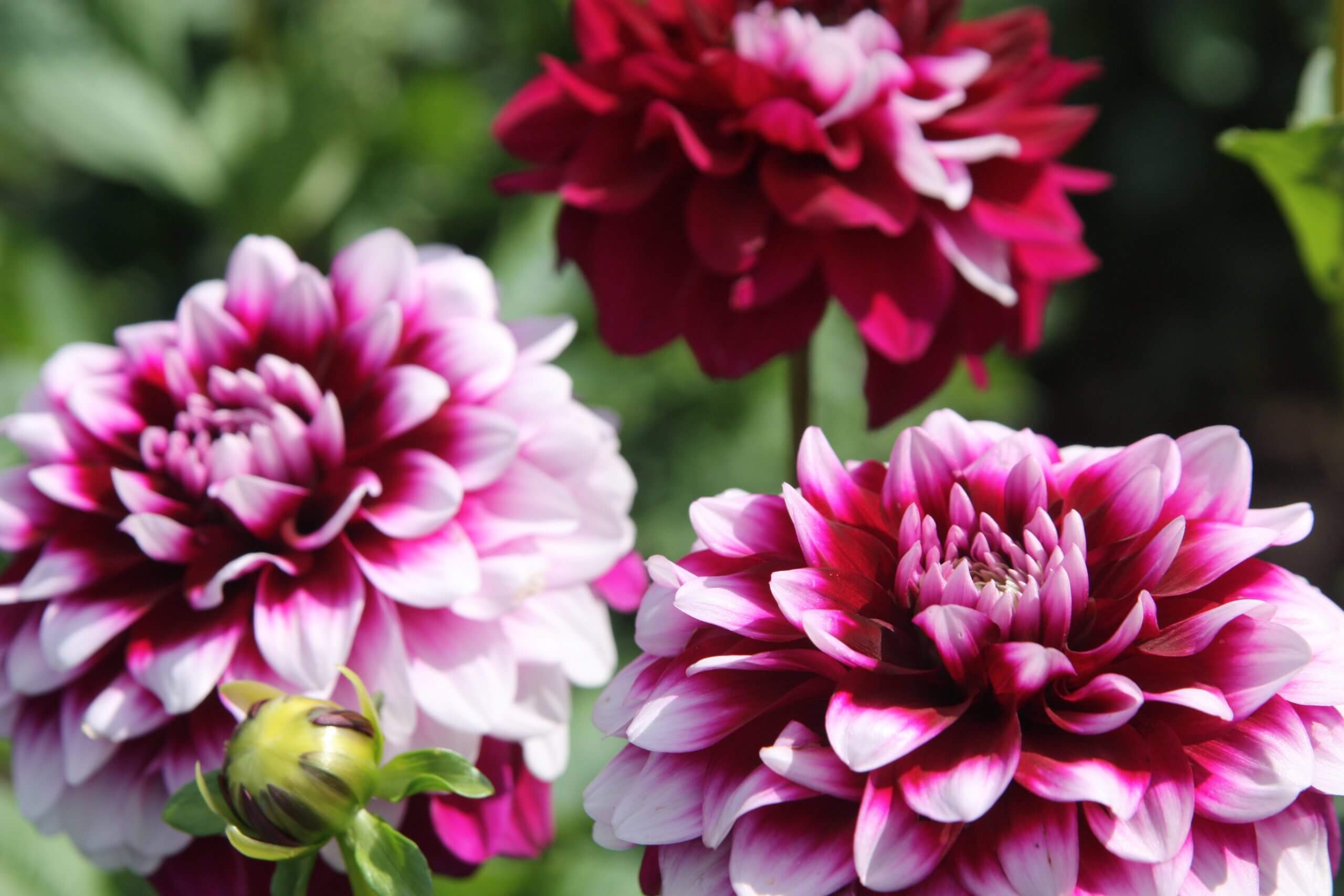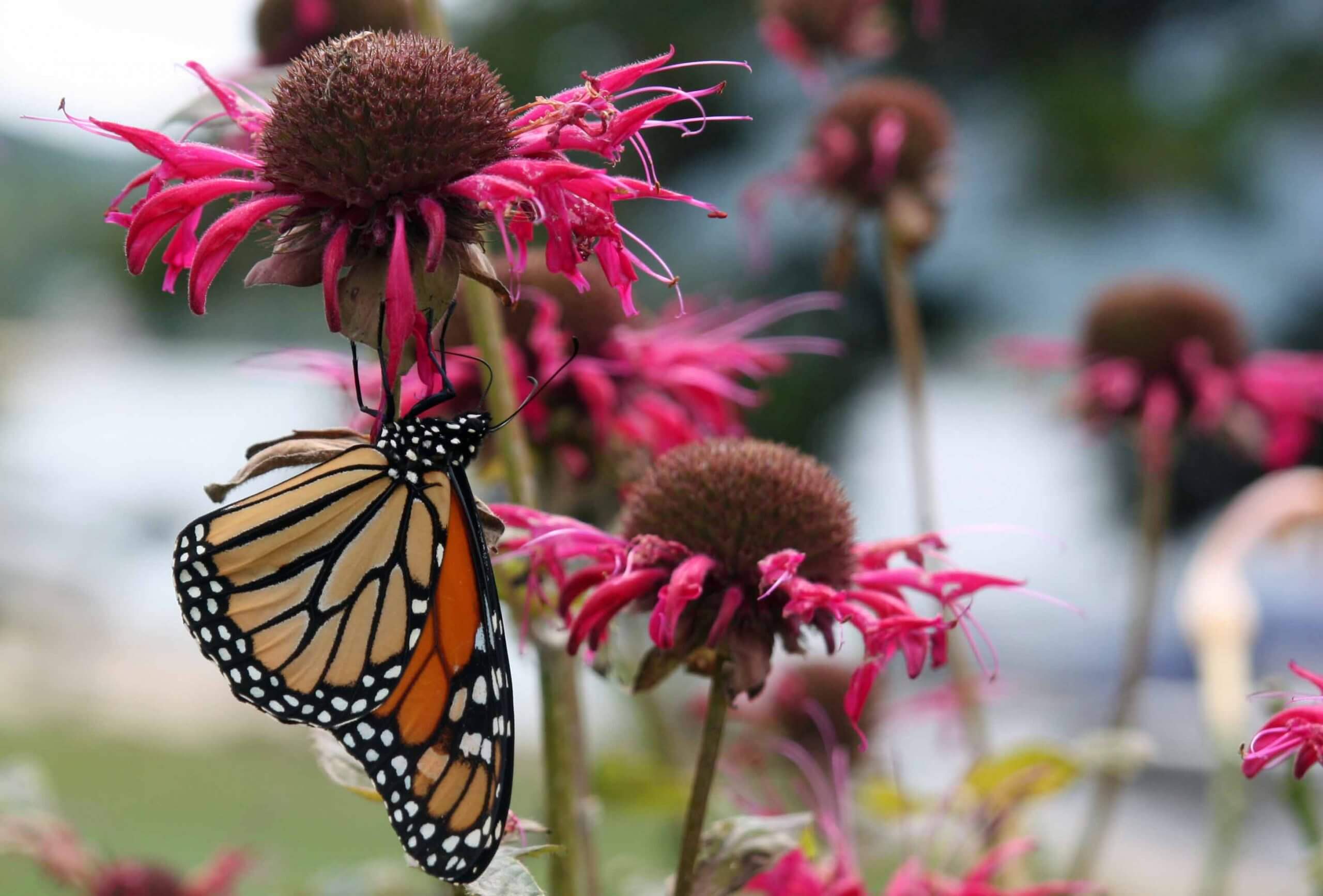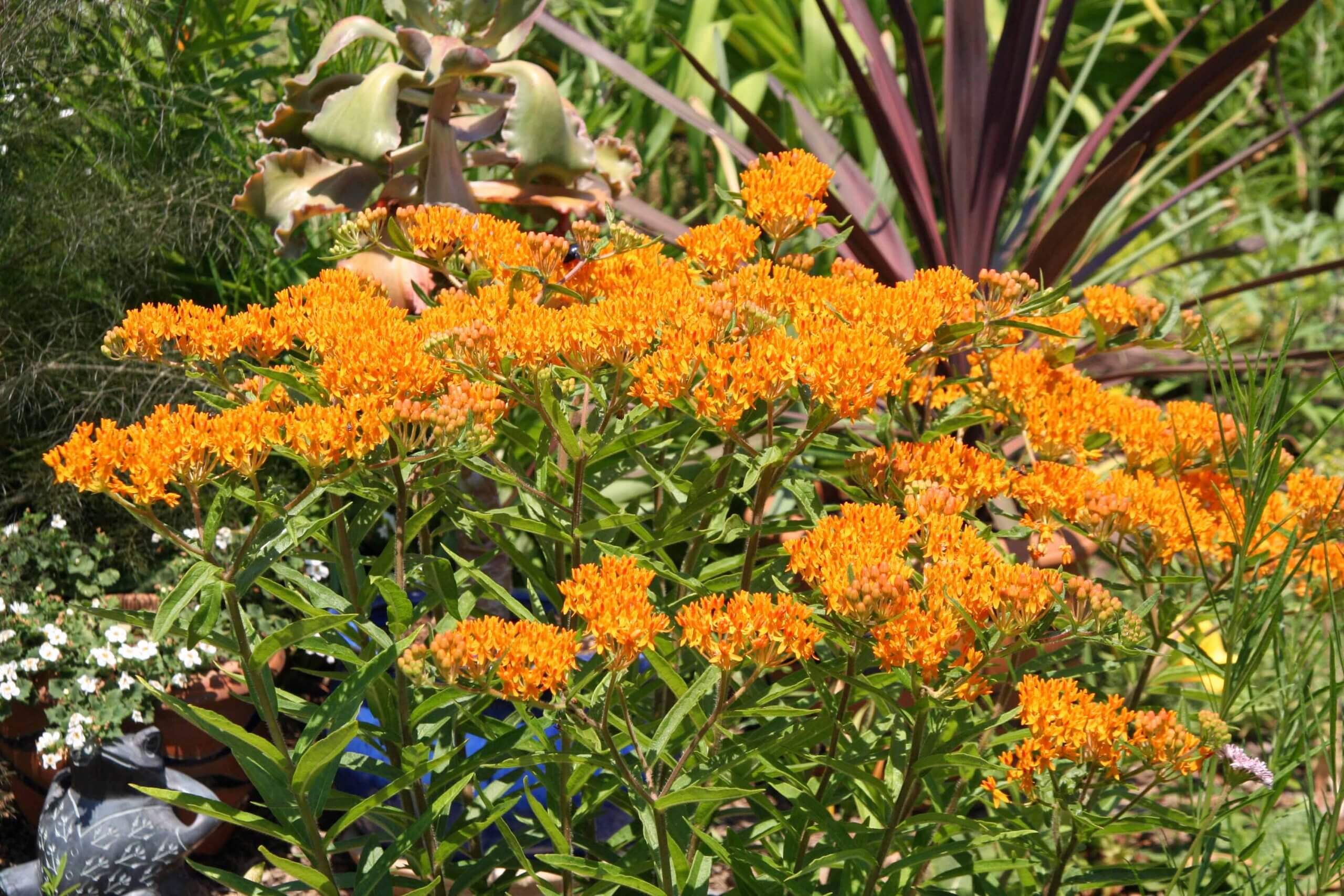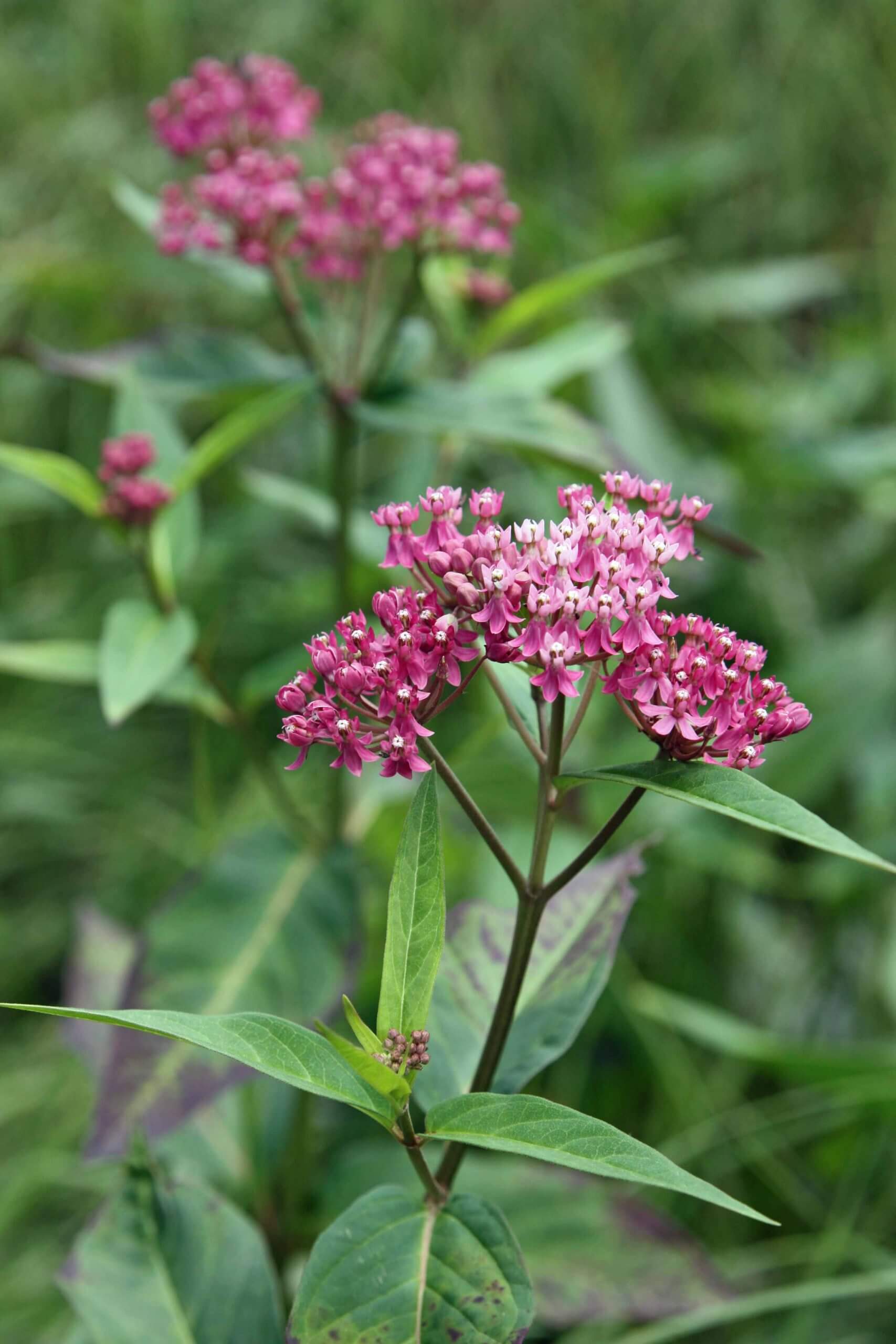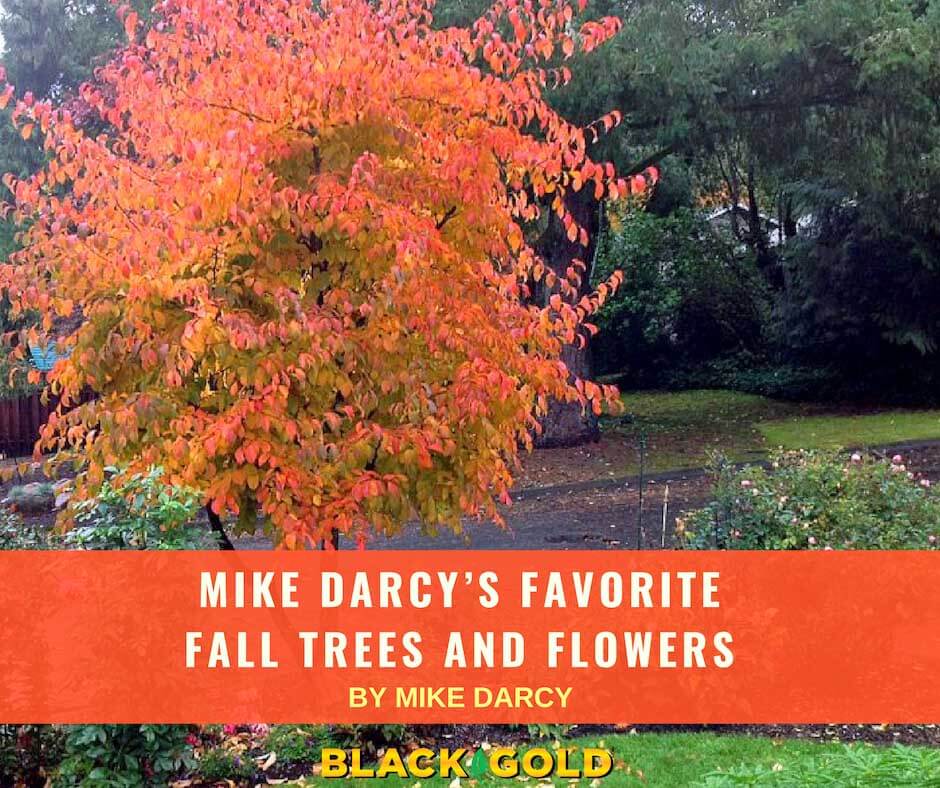
The fall season is upon us and what a glorious time of year it is. As I walk around my neighborhood and drive around Portland, the many deciduous trees are turning brilliant shades of color. The more brilliant they are, the better.
Favorite Fall Trees
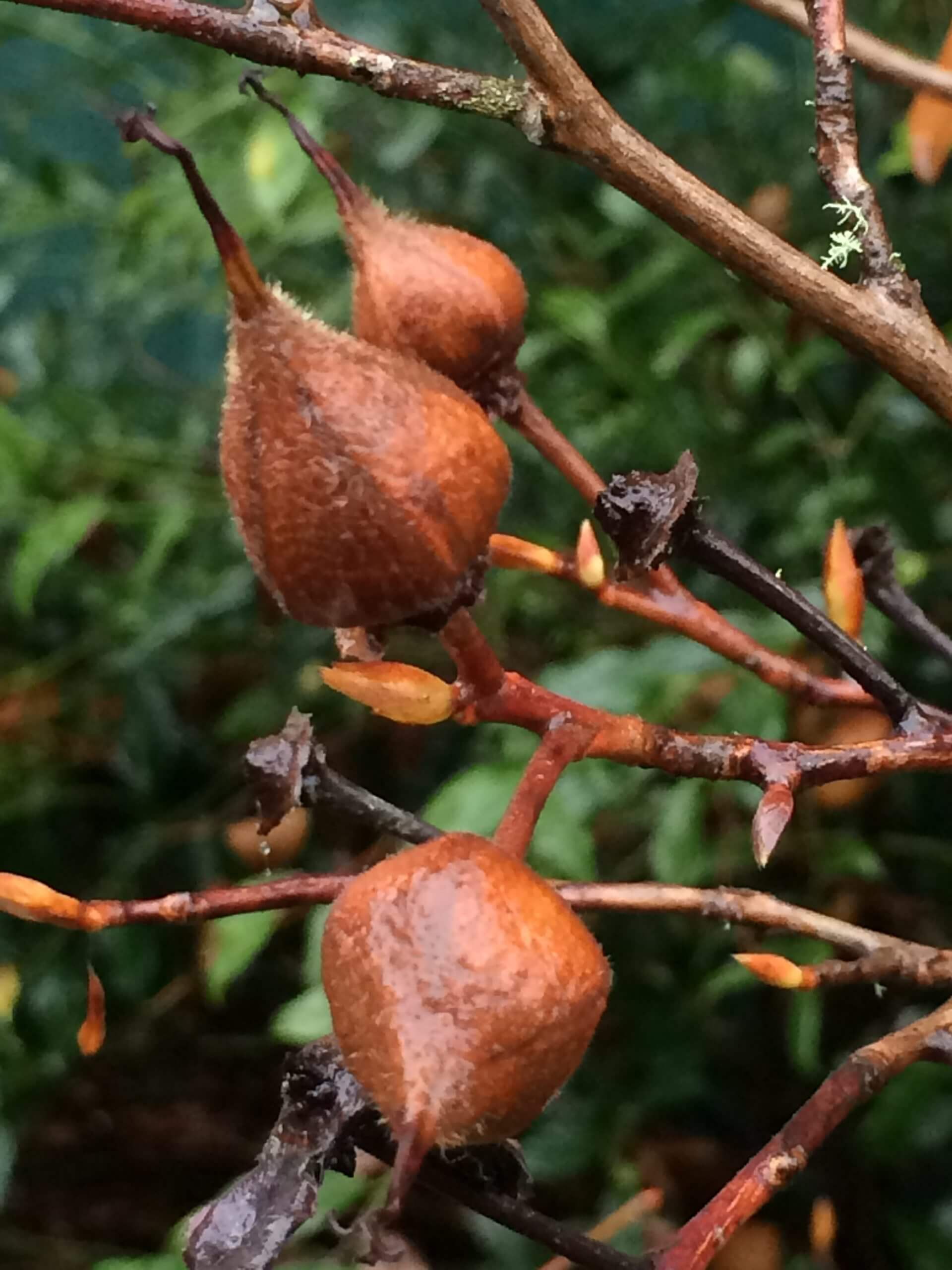
Many maples are turning red, some are orange, and others are shades of yellow. The Ginkgo (Ginkgo biloba) trees are turning golden yellow, and our summer annuals are telling us that their time is almost over. Sometimes we can have a tree that gives us scarlet fall foliage as well as beautiful seed pods. Stewartia pseudocamellia is just such a tree. Mine is planted in my front yard where it takes center stage.
Salvias
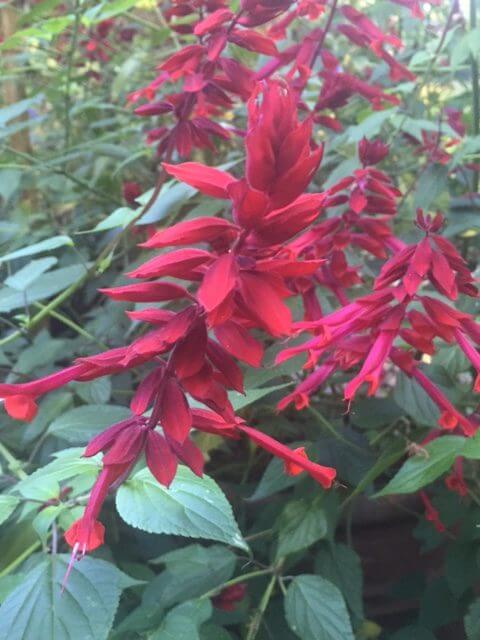
Yet, there is still much color in the garden, not only from foliage but from flowers as well. In my own garden, I am quite a Salvia fan and always willing to try new varieties. This past spring I purchased Salvia splendens Saucy™ Red, and I was rather disappointed with it in summer. It did not flower well compared to my Salvia guaranitica ‘Black & Blue’. Well, I had a very pleasant surprise this September. Evidently, Saucy™ Red likes cooler weather, shorter day-length, or maybe both, because it burst into full bloom and has continued ever since. It is mid-October, and the 7-foot-tall plant has burnished scarlet flowers on almost every stem. Sadly, the tender plants are only hardy to USDA Zones 9-10, so I will have to replant if I want to enjoy this Salvia again.
Impatiens tinctoria
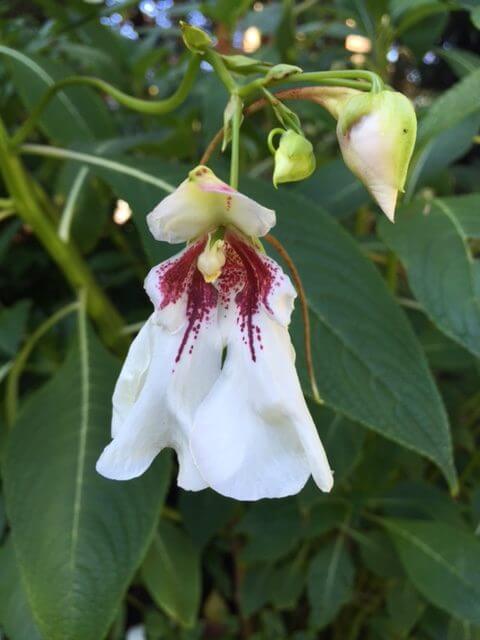
Another new garden flower this year is the 8-foot-tall, large-flowered, Impatiens tinctoria, which comes from the rain forests of East Africa. I had first seen it growing in a friend’s garden three years ago and was surprised to learn that it is a winter hardy perennial, surviving USDA Zones 7-11. This is my second year to grow it, and I learned that it likes grows best in shade with protection from the hot afternoon sun. In the spring, I worked lots of humus into the soil around it and mixed in Black Gold Natural & Organic Potting Soil. Today my plants are over 6 feet tall and blooming with a flower that does not look anything like a garden impatiens. These flowers are fragrant at night and attract much attention from garden visitors.
Cover Crops
Now is the time of year to put the summer vegetable garden to bed. The tomatoes are finished, as well as the beans, squash, peppers, etc. Once these plants are removed, it is an ideal time to prepare the soil for next season. Mix Black Gold® Garden Soil 0.05 – 0.02 -0.05 into the beds and plant a cover crop. Cover crops are broadcast legumes, or grasses such as buckwheat, that are planted to cover the garden in winter and are tilled under in spring.
 Legumes are plants in the Pea Family (Fabaceae) and include clovers and vetches. With the help of symbiotic bacteria called Rhizobium, they “fix” nitrogen from the air back into the soil, making it available to other plants. Thus, by planting a cover crop, you increase the nitrogen level of your soil while also protecting your beds from erosion and aggressive winter weeds. The added organic matter from the spring-tilled cover crop with also benefit your garden soil.
Legumes are plants in the Pea Family (Fabaceae) and include clovers and vetches. With the help of symbiotic bacteria called Rhizobium, they “fix” nitrogen from the air back into the soil, making it available to other plants. Thus, by planting a cover crop, you increase the nitrogen level of your soil while also protecting your beds from erosion and aggressive winter weeds. The added organic matter from the spring-tilled cover crop with also benefit your garden soil.
We always get some “sunny windows” during this season. These windows give us a wonderful opportunity to get out in the garden and do fall chores. Fall is also a great time to “edit” your garden. We all have plants that have gotten too big, are in the wrong place, or maybe we are tired of them. Walk around your garden with a note pad and make notes on garden editing that you can do throughout winter. But, most importantly, enjoy the season and its many colors.

